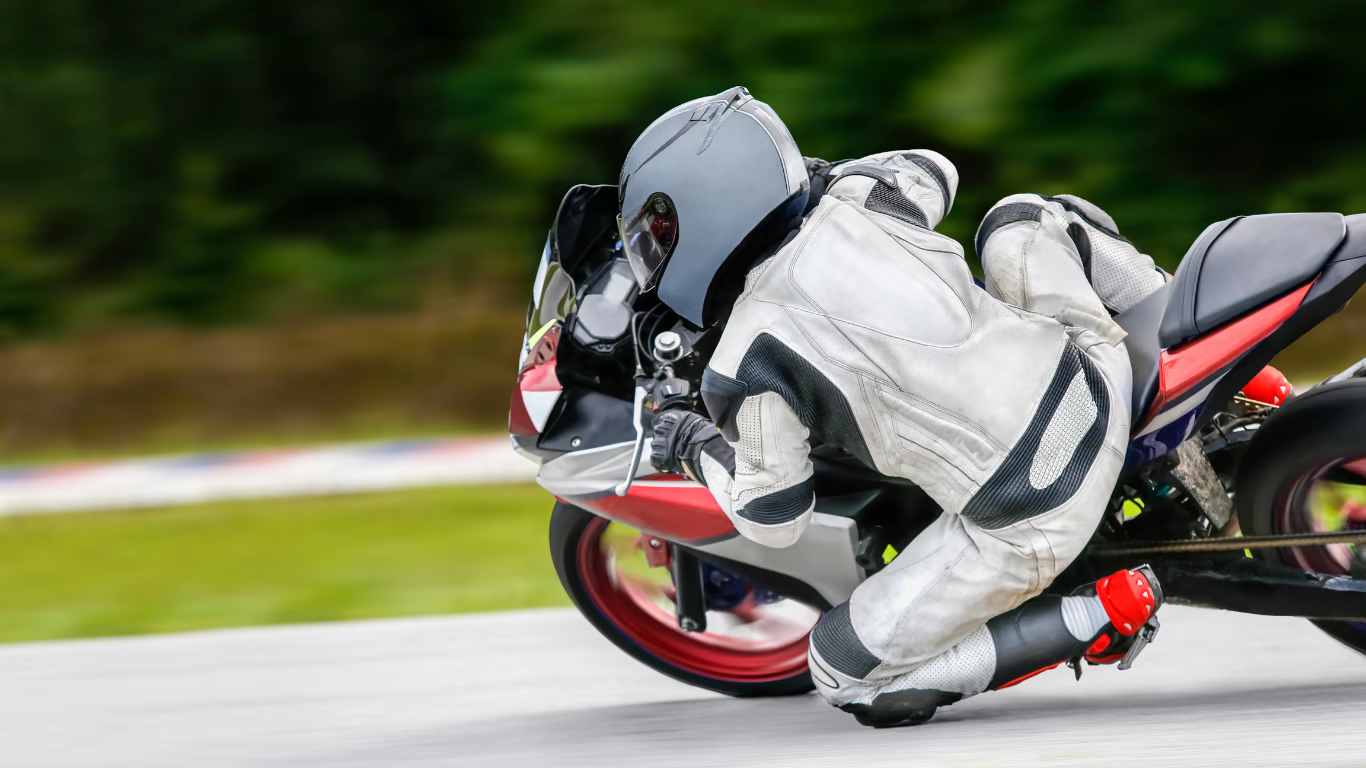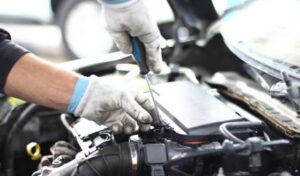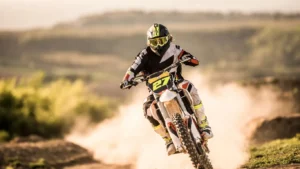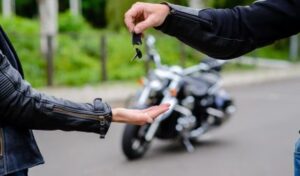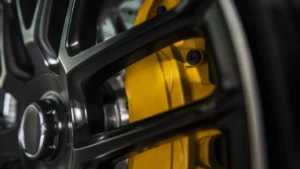When you’re on your way somewhere and your bike suddenly stops, your level of frustration rises. You keep attempting to start the bike, but your efforts are futile. There need not always be a cold start issue when this occurs.
Sometimes you get upset because you don’t pay attention to small things.
Sometimes the reason for this is also the failure of the motorcycle accelerator.
Though its job is to accelerate the motorcycle, it can also bring your bike to a complete halt.
In this article, you will learn how to repair a motorcycle’s accelerator if it becomes damaged, as well as the primary cause of such damage so that you can avoid it in the future.
What Is A Bike accelerator?
An accelerator is a device that can be found in any vehicle and is used to increase the speed of the vehicle by pressing a button.
This component regulates how much fuel and oxygen are introduced into the engine. When you press it, it starts sending fuel and oxygen to the engine right away, and the amount of oxygen goes up quickly.
Because of this, the engine starts to make more power right away, and the vehicle’s speed starts to go up right away as well.
Throttle is the valid word for the component known as an accelerator.
By way of a control mechanism, it is a piece of equipment that serves as a controller for the air-fuel mixture that is contained within the cylinder.
In engines that use a carburetor, it is installed in the carburetor, where it controls the air-fuel mixture.
In engines that use fuel injection, it is housed in the intake manifold, and the amount of it that is injected into the cylinder is precisely regulated. And then this fuel is injected directly into the engine.
7 Common Reasons Behind Bike Accelerator Failure:-
If you don’t know the precise reason for the problem, you won’t be able to diagnose it.
Even though there are many things that could cause an accelerator to fail, only seven are thought to be the main ones.
1. Broken Carburetor Linkage:
The accelerator isn’t working right because the linkage to the carburetor is broken. It’s possible that one or two of its parts will need to be replaced.
The fuel bowl, the needle, the float, and the other parts inside the motorcycle all work together to make sure that the bike will run without any problems.
If even a single component of this venture is unsuccessful, the whole thing will be a failure.
So, to find the broken link, you have to look at the carburetor and all of its parts.
2. Fuel Injection System Issues:
In an internal combustion engine, which is the same thing as an auto engine, fuel injection is the process of putting fuel into the combustion chamber using an injector.
The injection process should be clean and effective.
A malfunctioning injector is the root cause of the excessive consumption of diesel. It is extremely important that the starting pressure and spray pattern of an injector pattern are always accurate. Make sure the fuel injection pump is correctly placed and calibrated.
It is recommended that the calibration of the pump be done in places with modern equipment.
3. Ignition System Issues:
A motorcycle’s kill switch is connected to the ignition coil by the ignition switch on the motorcycle. The ignition coil sends an electric current to the spark plug through the spark plug wire. This starts the combustion process. In the event that the engine does not start, the switch will open the ground circuit to the ignition coil, which means that the coil will no longer have access to both positive and ground. If the ignition switch stops working, the link between the switch and the battery terminal will be broken or damaged. Furthermore, it works in opposition to the electrical signals. It is clear that there is a problem with the ignition system, and it needs to be fixed as soon as possible.
4. Electrical Faults:
Before checking your motorcycle for an electrical problem, you should always start with a fully charged battery.
After that, check the voltage that is present on your button. Verify by pressing the button switch in the correct manner.
Make sure that you test the connection that the button has with the starter relay. After that, you need to inspect the ground at the starter relay.
5. Broken Or Stuck Cable:
First, make sure that the cable on your motorcycle is not damaged in any way, including being frayed or broken.
In that case, all you need to do is grab the lever that is used for that brake in order to extract the cable from its housing.
If you loosen the brake cable pinch bolt, the handle will be able to move more freely than it would normally, and as a result, the exposed end of the cable will be visible inside the lever hood.
To clean it, carefully pull it off the lever, then set it aside.
6. Broken or Stuck Throttle Tube:
If there is no grease on the cable or if the cable gets caught in the mechanism, it can be hard to move the throttle.
A problem with the EFI or the carburetor is another possible explanation for this issue.
Additionally, the cable for the throttle tube can be tied into either the handgrip or under the tank.
7. Dirty Carburetors:
One last and major reason for this can also be that your carburetor is dirty or damaged.
In such a situation, you can clean the carburetor of your motorcycle without opening it.
Why Is My Bike Accelerator So Tight?
Most of the time, your throttle may feel too tight because the inner cable has built up too much friction with the outer cable.
If you take it to a mechanic, they will tell you to lubricate it, but please don’t; cables made in today’s world are not designed to be reused after being lubricated.
Always keep in mind that a clogged air filter in a motorcycle might not let enough air into the combustion chamber.
This could cause the air/fuel mixture to become too rich, making it hard to speed up.
If your motorcycle’s throttle gets stuck in the acceleration mode, pull the clutch, shift to neutral, and then turn the bike off.
Also, refrain from starting the motorcycle until the issue has been resolved.
Also, if the accelerator gets stuck in the closed position, you need to stop the motorcycle as soon as possible, inspect the throttle cable, and then thoroughly clean it.
When Do We Need to Replace the Accelerator Cable?
If the accelerator cable on your motorcycle is damaged, the pedal will be difficult to press if the motorcycle feels hard or stiff.
In this case, the pedal is stuck. It won’t come off in the usual way, and the pedal’s speed is much slower than usual.
Because of this, you should be ready for an uneven idle or an idle that is unusually low.
When you press down on the pedal, there is a delay in the response because the engine of the motorcycle is stopping the majority of the time during this period.
And when you start to notice all of these warning signs on your motorcycle, you have to replace the accelerator cable on your motorcycle right now.
How To Fix A Bike Accelerator?
When you put your foot on the accelerator of your motorcycle, does it feel like you have little control over the machine’s speed or power?
If it does, then the problem is a delayed throttle response, and problems like this can be caused by a number of different issues as well.
On the other hand, delayed acceleration can also mean that the throttle doesn’t do anything when you turn it.
If you are having this problem while riding a motorcycle, you need to find a solution as soon as possible so that you don’t do more damage to your bike or yourself or get into an accident because you didn’t take the right safety measures while you were on the road.
We’ve listed some of the most common problems that come with a slow throttle response, as well as how to fix them.
1. Cable Position
First, you need to look at the throttle cable to see if it is damaged. Because of the potential for friction to develop, flaws such as cracks, knots, rust, and severely worn areas should all be causes for concern.
It is very important to check the cable that goes from the throttle grip to the throttle body or carburetor as carefully and methodically as possible, using your eyes as much as possible.
2. Cable Free Play Check
You may already know that the free play in the throttle cable is usually measured by how much the throttle grip moves in relation to a fixed point on the throttle cable housing.
Most of the time, the free play in the throttle grip is between 2 and 3 millimeters.
This is easy to check by looking at a prominent part of the throttle grip or marking it with a marker and using a ruler, scale, or calliper to measure how much the throttle grip moves in relation to the housing.
It is also something that is fairly straightforward.
3. Checking Throttle Return
If the throttle cable breaks or the rider loses control of the machine, it is common knowledge that any throttle that is fully compliant for use in powersport applications has a safety feature that keeps the throttle from closing all the way.
If your motorcycle’s throttle cables are sticky or binding, or if accessories like the throttle grip handguard mount are sticking, the return spring pressure may not be strong enough.
4. Throttle Cable Adjustment
Most modern machines and motorcycles have two throttle cables called the accelerator cable and the decelerator cable.
These cables are connected to a throttle body and carburetors. Frequently, older machines have a single throttle cable.
Let me tell you that the number of adjustments made based on the machine will also vary significantly.
Some applications are on the throttle body, the carburetor, and the throttle cable housing, but there is only one adjustment point on the throttle cable housing.
On machines with multiple adjustment points, small adjustments are made to the throttle cable housing while large adjustments are made to the throttle body or carburetor.
5. Dual Cable Adjustment
In the meantime, take off any dust covers from the throttle cable housing and check which cable controls the accelerator and which controls the brake.
Remove any necessary dust covers and identify the accelerator and decelerator cables prior to adjusting the dual-throttle cable machines.
When the throttle is open, the accelerator cable is under tension, and when the throttle is closed, the decelerator cable is under tension.
Each cable can be easily found by looking at the design of the housing or making small changes to see what else is affected.
6. Single Cable Adjustment
We’re all aware that adjusting a single throttle cable is simple. But any dust cover protecting the cable adjuster needs to be removed first.
After that, the locknut should be loosened. The cable adjuster can then be adjusted in or out when the throttle grip has the correct amount of free play, which is usually 2-3 mm.
Once complete, the locknut can be snugged and the dust cover reinstalled on whatever part of your motorcycle you have.
7. Check After Adjustment
After making any changes to the cables, it is important to check the system.
As soon as you know that the accelerator return mechanism works correctly in each position of the handlebars, you should start the engine during this time.
While the engine is running in neutral with the starter button depressed, move the handlebar from one stop to the next and listen for any change in the way the engine is idling.
If the engine’s idling speed goes up or down, it could be because the throttle cable is sticking because of tight spaces or bad cable routing.
Conclusion
I hope that by reading this article, you have been able to find answers to all of the questions you have had regarding accelerators.
By this point, you should be familiar with the concept and operation of a motorcycle accelerator.
If you thought the article was interesting, let us know what you thought about it in the comments section, and if you have any questions about it, feel free to ask them.
